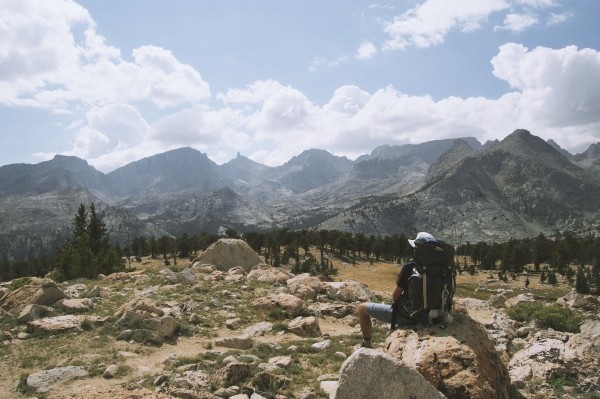
You are finally making the leap to that big trip you’ve been talking about? That’s great!
Then you’ll most probably want to record your journey on camera.
But you wonder how to manage all your photos (and videos) while traveling and to make sure they’re safe for the future?
Here are some basic principles based on Arnaud’s experience: after losing it all in 2007 in Mexico, he’s managed not to lose a single picture since, while travelling in 20+ countries across 4 different continents! These guidelines mostly apply for conventional cameras, not for smartphones. They will help you avoid struggling and losing your most precious travel souvenirs.

Backup your photos 3 times
Backup professionals recommend to make 3 distinct copies of all your files and to keep them in different locations. Try sticking to that rule, because it’s a fact: using a combination of devices and locations will help you lower the risk of loss.
But it may be tricky to deal with while traveling, especially if you are backpacking in some remote destination. Also you’ll probably won’t have the time nor the desire to force yourself to such tech constraints.
Well, it can be easier than you think. Choosing the right mix of backup devices is the key to a painless experience.
Use multiple locations and devices
There are many options that you can consider while traveling, here are the most popular. Choose a combo of 2 to 3 devices that fit your needs!
Camera memory cards
You’ll need a bunch of those, just to make sure you always have free disk space for taking new pictures. It’s both very affordable and the lightest storage devices you can find on the market, so you shouldn’t hesitate on having many of these.
Laptop, netbook or tablet
When I travelled for 9 months in 2012, a friend of mine whom had backpacked through Latin America insisted that I bring one and never did I regret it. You can find both cheap and light netbooks that will be very useful to store and organize your pictures on the go.
It’s also very useful to surf the Internet, plan your trip, make reservations, stay in touch with your pals (etc.) …without using unreliable public computers.
You could also use a tablet as a backup solution using a connection kit. How to transfer your pictures on the device varies from one tablet to another, but you should easily find online tutorials to help you.
External hard drives
There are very light USB powered hard drives with big storage capacity (2T or over). Light and cheap, these are very handy. But you’ll need a laptop to upload your pictures and videos.
If you don’t want to carry a laptop, you should probably choose a multimedia storage device or hyperdrive (like the Sanho Colorspace) that allows you to plug your memory cards directly on the device. They have an LCD monitor to preview pictures, which is great to keep it organized. These little devices are more expensive than classic hard drives, yet it remains affordable.
Cloud storage
Saving your pictures in the cloud is easier than ever, even in remote places. Hotels, guesthouses, restaurants often offer free WIFI. So you may consider uploading your daily pictures to some cloud services like Dropbox or Flickr (etc). There are many services that offer free storage up to a few gigas. If you need more disk space, some providers offer unlimited storage for less than 10$/mo.
If you were to travel with a laptop, you can sign up for a complete backup service, like Blackblaze or Crashplan. Their pricing start at 4$ / computer, so it can be pretty economic.
The main issue to using cloud storage is the network accessibility. Bandwidth for instance can be (very) limited. And sometimes there won’t be any internet at all. Therefore, cloud storage should not be your unique backup location.
Finally, you shouldn’t plan on uploading RAW files and HD videos as it will be nearly impossible in most places. Prefer to upload JPEG for instance.

Don’t put all your eggs in the same basket
Didn’t your grandma told you “not to put all your eggs in the same basket”? Mine always did! It felt like jibjab to me back then, but she was damn right! When I was in Mexico, someone stole my laptop. And my backup hard-drive… I was stupid enough to keep them together and because of that, I lost all my pictures from before 2007. So yes, having all your eggs in the same basket increases the risk of losing it all.
Here’s what you should consider doing. While traveling, you’ll probably have a large backpack and a smaller daypack, or maybe a camera pack. Make sure you keep hard copies of your photos in every bag and that your laptop / hard drives / camera are secured in different holds! So if something was to happen to one of your bag, you will still have a backup.
Review and edit your pictures on the go
Don’t wait to be back home with 20,000 pictures to start editing your pictures. It will be a real pain and you’ll most likely never do it! Instead review, select and edit your shots on the go.
You don’t need 10 versions of a same landscape. Choose the best one and stick with it. Oh, and if you have a doubt on whether you should keep a photo, it’s probably not good enough to be worth keeping.
A laptop offers a great opportunity to edit directly in Lightroom or any other app that you like. Organize your pictures in directories or albums, tag the pictures to make them easily searchable in the future. If you don’t have a laptop, review your pictures directly on your camera or hyperdrive.
Doing so will help you limit the number of pictures you have — and therefore the number of pictures to backup or upload in the cloud.
Backup your pictures everyday
Try to transfer and backup your photos everyday. Two reasons for that. First, it will significantly reduce the risk of loss. Plus, the workload will remain reasonable and it will need less of your precious time.

My perfect combo
Netbook + Hard Drive + Cloud + Memory Cards
Personally, I like to travel with an ultra light netbook that’s about 1Kg and an external hard drive (0,2 Kgs). During day walks or hikes, I’d live the netbook at the guesthouse and only carry the external hard drive and camera with me.
I also use Flickr. But I don’t upload all my pictures, while I’m travelling: I rather transfer a best-of selection in case I’d lose all my belongings. When the bandwidth is limited, I’d often leave my netbook uploading all day and all night in the guesthouse, with varying results.
Finally, I use plenty of memory cards for my camera. I only erase them when I’m sure that it’s content is in both the cloud and devices.
It’s a very light and affordable combo that has suited me well in the past years and offered the desired outcome: I have not lost any picture since 2007!
Backup tips summary
- Backup your pictures & videos 3 times
- Use multiple locations and devices
- Don’t put all your eggs in the same basket
- Review, select and edit your pictures on the go
- Backup your pictures everyday
What about you? How do you manage your photos — and other digital travel souvenirs?







